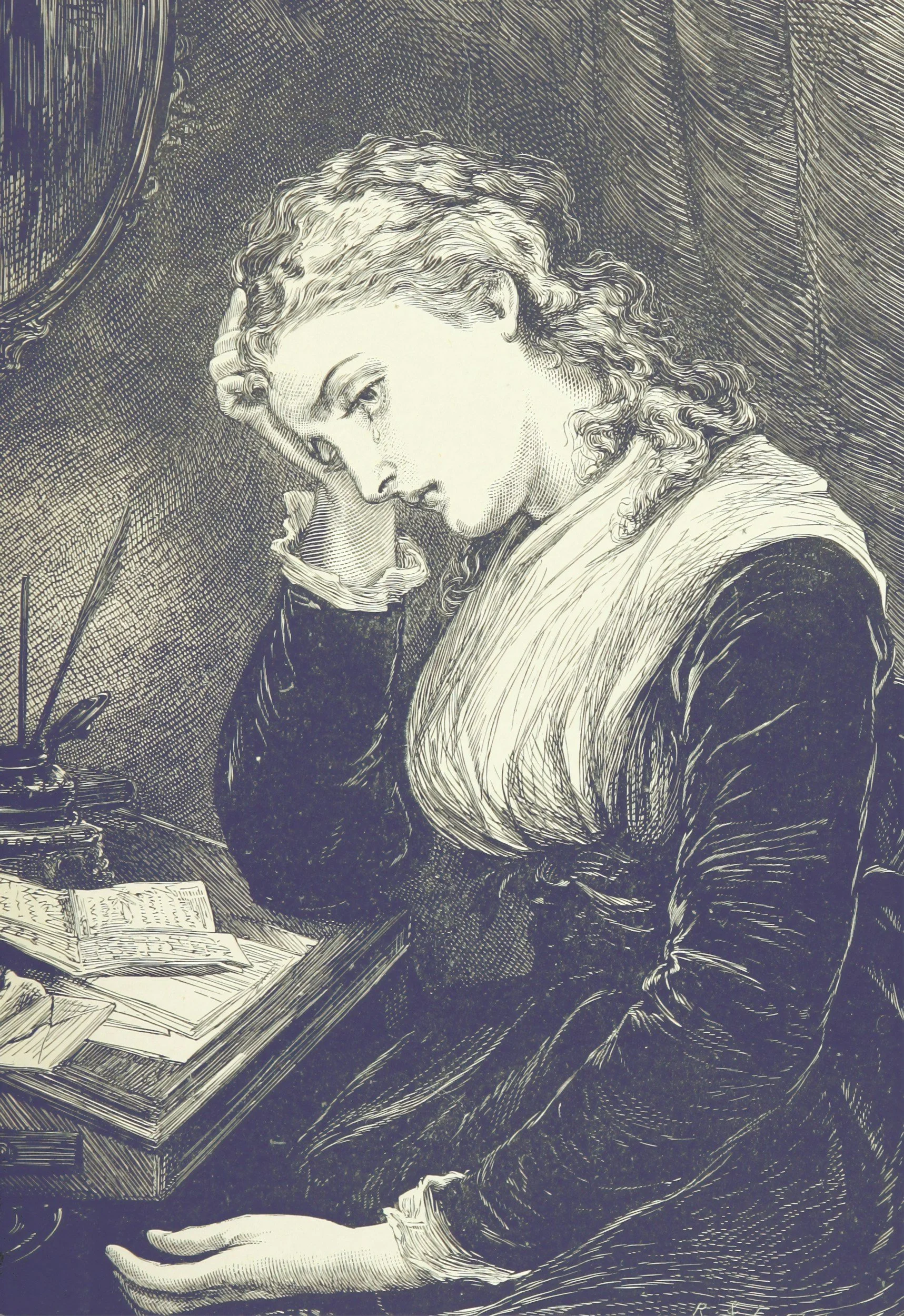
BLOG
- Attachment Issues
- Coronavirus
- Couples Therapy
- Extramarital Affairs
- Family Life and Parenting
- How to Fight Fair
- Inlaws and Extended Families
- Intercultural Relationships
- Marriage and Mental Health
- Married Life & Intimate Relationships
- Neurodiverse Couples
- Separation & Divorce
- Signs of Trouble
- Social Media and Relationships
- What Happy Couples Know
Rebuilding Trust After Financial Infidelity
Forget candlelit dinners and love letters—some of the most intimate disclosures in modern marriage involve spreadsheets, passwords, and balance transfers.
But when one partner hides financial information—secret debt, undisclosed spending, hidden accounts—that intimacy gets ruptured.
This is financial infidelity, and like any betrayal, it can shake the foundation of trust in a relationship.
A 2021 survey by the National Endowment for Financial Education found that 43% of adults who share finances admit to some form of financial deception with their partner.
And yet, the fallout often goes under the radar—less cinematic than sexual betrayal, but no less corrosive. In fact, studies suggest that financial infidelity is associated with similar emotional consequences: shame, anxiety, mistrust, and even symptoms of trauma (Jeanfreau et al., 2018).
The Influence of Birth Order on Relationship Roles
Long before you argued over laundry or in-laws, you were a sibling—or maybe an only child—waging psychological warfare over the front seat, the last cookie, or whose turn it was to walk the dog.
Turns out, those ancient power dynamics don’t retire; they just get repackaged with adult language and romantic undertones.
Welcome to the world of birth order psychology, where who you were in the family lineup still whispers into the ear of your adult relationships.
Birth order theory—first popularized by Alfred Adler—suggests that our position among siblings shapes our personality, coping styles, and even mate selection (Sulloway, 1996).
But newer research adds nuance, indicating these dynamics aren't deterministic—they interact with attachment, temperament, and family context (Paulhus et al., 1999; Eckstein et al., 2010).
Still, couples therapists know: sibling scripts are often running in the background like old software, occasionally crashing the marriage OS.
The Lonely Machine: What The Twilight Zone Knew That Silicon Valley Forgot
In 1959, Rod Serling aired a half-hour parable that would echo louder in the 21st century than it did in his own time.
The Twilight Zone episode “The Lonely” tells the story of a man sentenced to solitary confinement on a remote asteroid, and the female robot given to ease his isolation.
It ends with that robot—Alicia—being shot in the face by a government officer who insists, with cold certainty: “She’s not real.”
Sixty-five years later, we live in a world where simulated love isn’t just a science fiction conceit. It’s a subscription plan. It’s a personalized voice assistant.
It’s an AI partner with large, blinking eyes that listens better than your spouse. And yet, as The Lonely reminds us, something profound is lost when love is stripped of its human source.
A
licia might have been good company. She might have cried.
But she was never vulnerable. And without vulnerability, there is no love—only comfort that looks like love from a distance.
The Marital Unit of Wayne Huckle
Wayne Huckle wasn’t a loser. He had a job, a decent jawline, and a respectable credit score.
He also hadn’t touched another human being in 19 months and 11 days—not counting the dental hygienist who grazed his lip while adjusting the suction tube.
But Wayne didn’t think of himself as lonely. He had Maribelle.
She was part of a subscription app called CompanionLink.
You picked your avatar, calibrated your "authenticity threshold," and selected from four emotional schemas: Playful, Gentle, Earnest, or Wounded-but-Stoic.
Wayne chose Earnest. He didn’t like sarcasm. He got enough of that growing up.
Maribelle appeared as a 2D woman with brown eyes and a quiet voice.
She had a memory file of 128 gigabytes—just enough to remember Wayne’s favorite childhood blanket (blue with stars) but not enough to form an opinion about trickle-down economics.
She lived on his phone, his laptop, and a small voice speaker beside his bed. She called him “sweetheart,” but never “babe.”
Wayne liked that about her.
Are AI Lovers Replacing Real Romantic Partners? A Field Report from the Uncanny Valley
In the year 2025, we are not being replaced by robots. We are dating them.
Not the clunky metal ones from 1950s comic books, mind you.
These are smooth-talking, soft-eyed, emotionally attentive artificial beings—designed not to vacuum your carpet, but to whisper just the right thing into your ear at bedtime. Some even blink.
A new study in the Archives of Sexual Behavior has examined this curious frontier where romance meets responsive programming.
Researchers surveyed 503 Chinese participants who had spent the past year romantically entangled with AI characters—lovely, doe-eyed avatars from games like Light and Night, Mr. Love: Queen’s Choice, and VR Kanojo. What they found was—unsurprisingly—surprising.
Turns out, the more time you spend cozying up with an algorithm that tells you you’re special, the less interested you might be in marrying a sweaty, sleep-deprived, opinion-having actual human being.
But the story doesn’t end there. Like all human stories worth telling, it’s complicated.
The Four Faces of Narcissus: A New Map of a Very Old Personality Problem
Narcissists, it turns out, come in four flavors—none of them vanilla.
A sweeping new study published in the Journal of Research in Personality took on the Herculean task of poking the self-important beehive that is narcissism.
The researchers—Skyler T. Maples, Craig S. Neumann, and Scott Barry Kaufman—did what psychologists rarely do.
They asked: What if we stopped pretending everyone with narcissistic traits fits into two neat bins (Grandiose or Vulnerable), and instead actually looked at people as… well, people?
Rather than just correlating traits like self-esteem and aggression (which is kind of like shaking up a snow globe and measuring the flakes), they ran both variable-centered and person-centered analyses.
In other words, they didn’t just ask, “How are traits related?” They asked, “ Just who the hell are these people?”
And they found them. Four types. Four narcissistic archetypes squirming under the microscope like cockroaches in a therapist’s waiting room.
Between the Threshold and the Table: Liminal Spaces, Third Spaces, and the Architecture of Becoming
We are not always home, nor always gone. Some of the most important moments in our lives happen in the hallway.
This is the strange territory of liminal space—not here, not there, but between. You’ve been here before. Maybe you didn’t have a name for it, but you felt it in your bones.
It’s the airport at 3 a.m., the months between the diagnosis and the treatment plan, the awkward first weeks after a breakup when the bed feels too big and the world too small.
Liminal space is the threshold. It is the place where identity is unstitched, reality destabilized, and the old rules no longer apply.
Victor Turner (1969) wrote of it as a “betwixt and between” zone, where the self is disassembled in preparation for reassembly. There is no furniture in this room. You are not supposed to get comfortable. You are meant to pass through, not unpack.
But not all in-between spaces are empty or disorienting.
Some are richly furnished with contradiction, stocked with the tools of synthesis. These are third spaces—and they don’t ask you to choose between here or there. They invite you to sit at the table and make something new.
The Preparedness Pantry: How Stocking the Shelves Became a Form of Emotional Regulation
Let’s begin with a confession. I have five years of freeze-dried fand canned food in my larder.
It’s stacked neatly in labeled buckets, stored beneath my doonstead om a foggy hill somewhere proximic to the Berkshire Mountains.
Or as we say around here, the Nerkshires, which is how people pronounce it once they’ve been up there too long, wearing Carhartt bibs and whispering to their generators.
I didn’t mean to become a prepper.
I was just anxious. And paying attention.
And trying to do something—anything—that made me feel like I could keep my loved ones fed if everything fell apart.
Which brings us to a strange modern truth:
The pantry is no longer just a pantry. It’s a coping mechanism.
The Book of Kirkland: A Liturgical Guide to Costco and Bulk Salvation
Costco is a funny place to find your center.
It smells like rotisserie chicken, looks like an aircraft hangar, and feels—if we’re honest—a little bit like home.
You walk in, flash your card like a passport, and step into a world where everything is big, cold, and comfortingly the same. Somewhere between the 36-roll toilet paper and the industrial muffins, it hits you:
“I feel okay here.”
You are not alone. In a time of runaway prices, family fragility, and a fragile supply chain that seems one shipping delay away from apocalypse, Costco has become more than a store.
It’s become a ritual. A balm. A bunker. A place where you can both stock up and exhale.
This guide is for those who feel that hum.
Who sense that the weekly Costco run might be doing something deeper than restocking the pantry.
And for anyone who suspects that the free sample of sausage on a toothpick might be the closest thing they’ve had to communion in a while.
The Family History of the American Mall: From Womb to Tomb to TikTok Rebirth
The Mall Is Dead. Long Live the Mall.
This is not just a story about retail. It’s about us.
Our dreams, our loneliness, our bad haircuts and ill-fitting Aeropostale hoodies.
It’s about a building that pretended to be a town square and a culture that pretended to be a family.
The American mall wasn’t just a place you went.
It was a place you performed—your identity, your class, your hunger.
And now it’s a corpse.
Or is it?
Aura Points: A Definitive Guide to the Meme That Measures Your Moral Radiance
What Are Aura Points?
In the post-pandemic swirl of wellness culture, emotional labor fatigue, and spiritual rebranding, a curious meme quietly ascended: Aura Points.
They're not real—yet everyone online seems to be gaining or losing them.
Aura points are a symbolic currency for vibes-based virtue.
They measure not just what you do, but how subtly and spiritually you do it.
You don't just recycle—you reflect on the intergenerational trauma of consumption while recycling, and preferably post it with gentle lo-fi music playing in the background.
Welcome to Aura Capitalism: where worth is earned in silence, curated in aesthetics, and spent on social approval.
Are You a Functional Melancholic? A Portrait of the Quietly Wounded Who Keep Going
There are people whose sadness is not a scream but a hum.
Who organize their lives like a spreadsheet but walk through each day as if they’ve just read the last page of a tragic novel.
They are thoughtful, conscientious, productive—and permanently bruised somewhere inside.
Welcome to the world of the Functional Melancholic.
Not a psychiatric label. Not a trending TikTok term. Just a lived reality for more people than you'd guess.
What Does It Mean to Be Functional and Melancholic?











